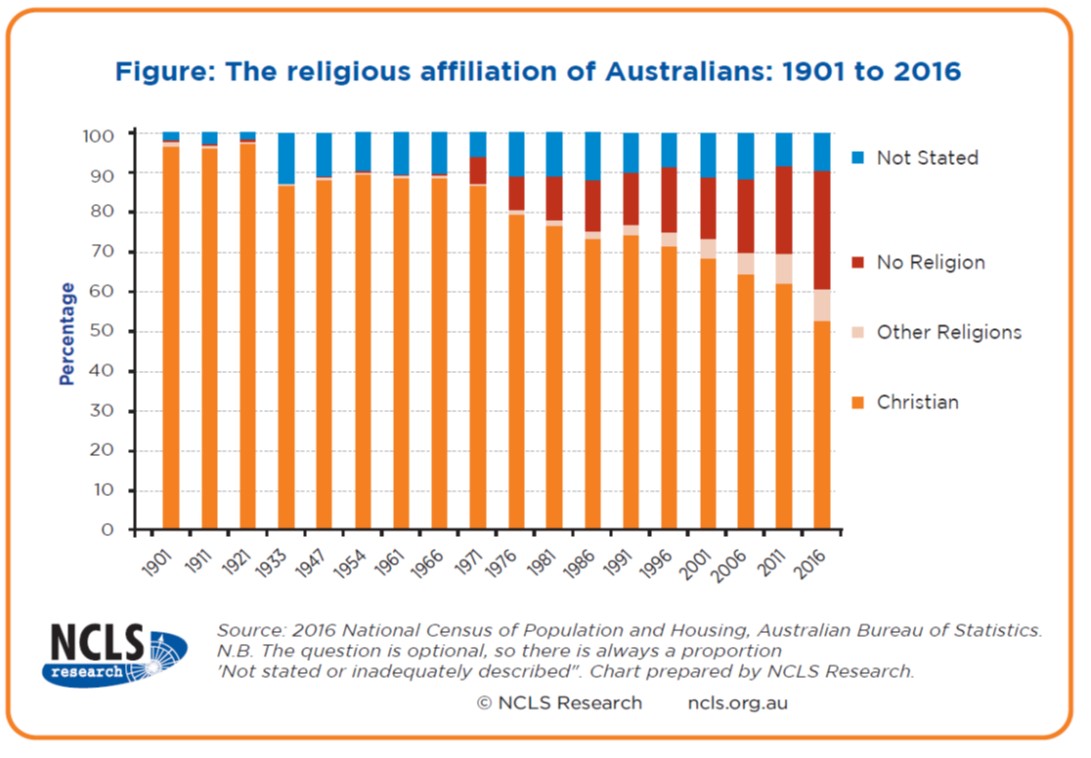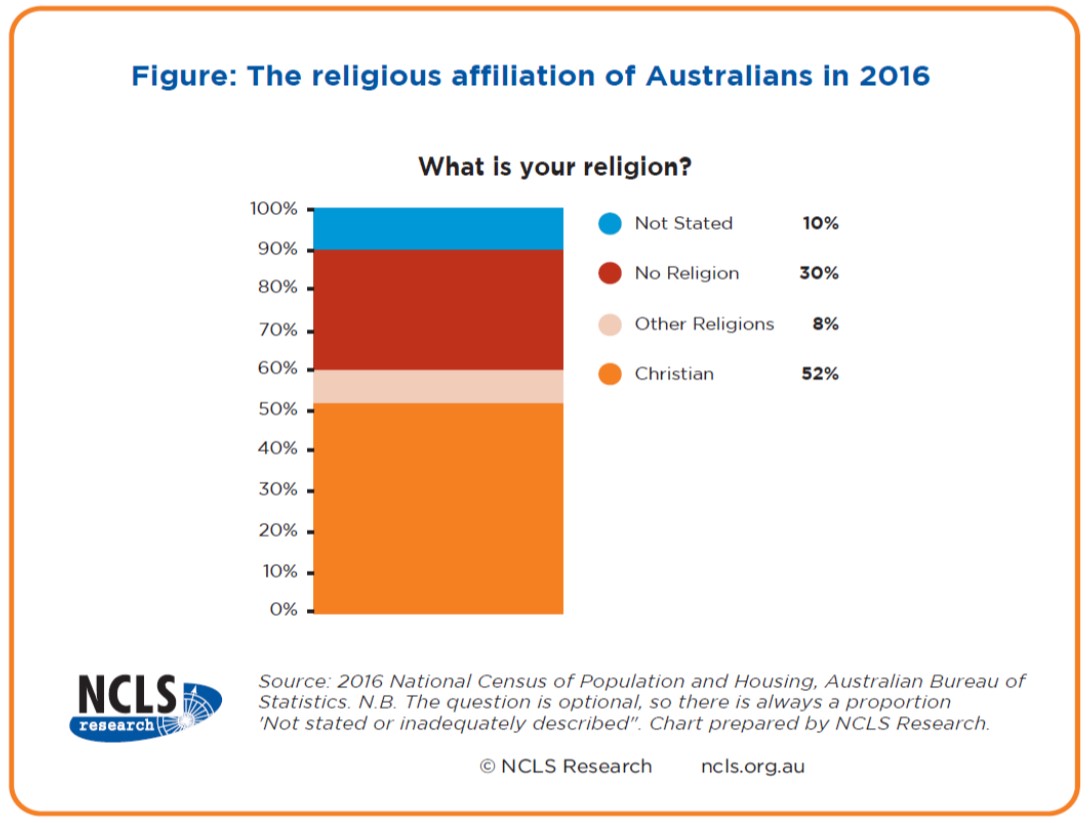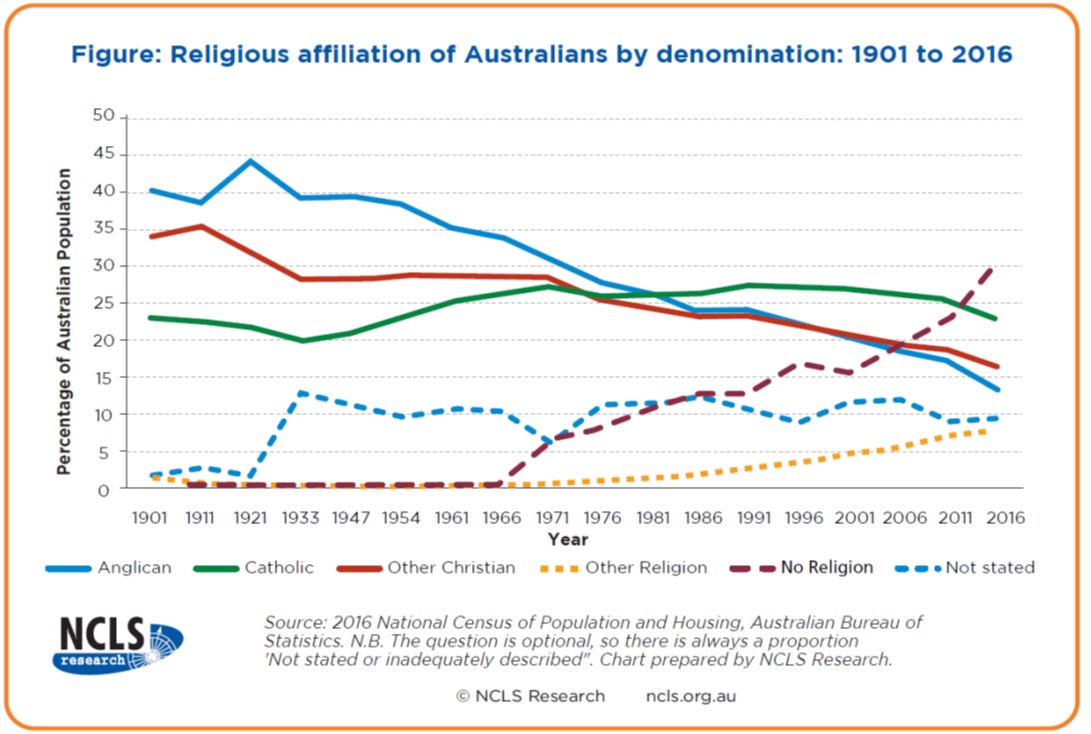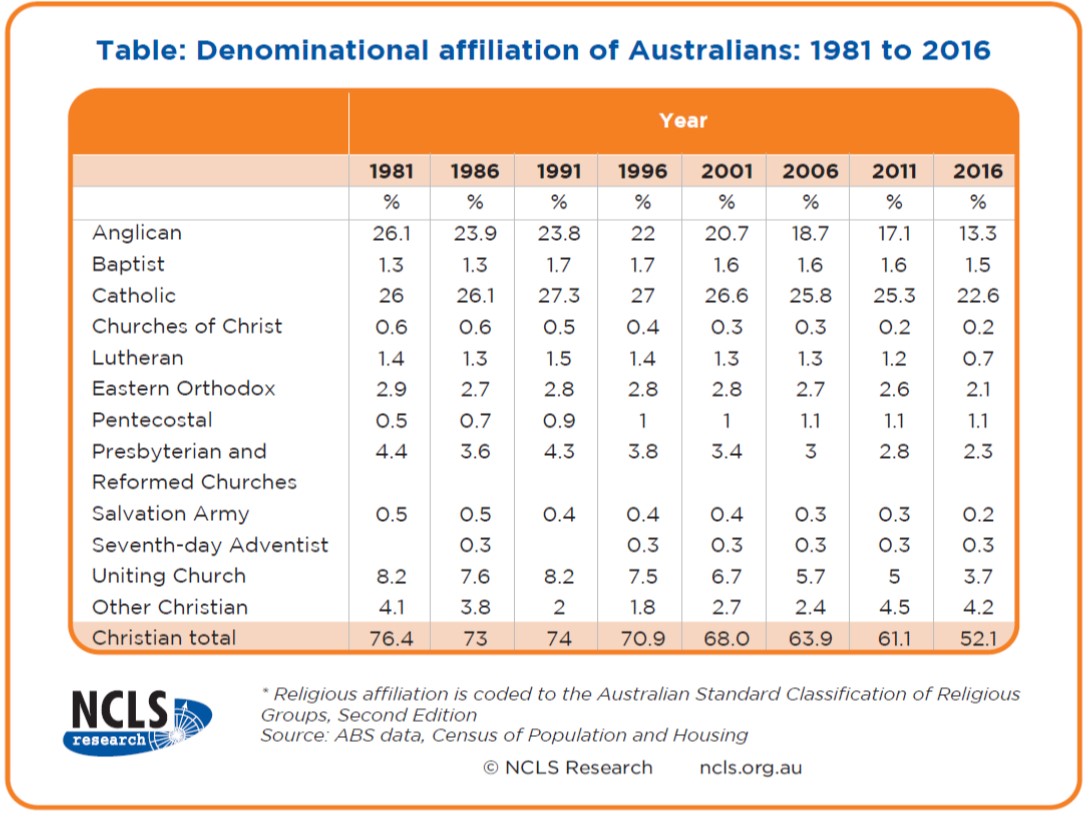Religious affiliation has declined over time, yet six in ten Australians continue to claim a religious identity.
In the 2016 National Census, 52% of Australians identified as Christian, with Catholics as the largest religious group in Australia. A further 8% of Australians identified with other religions. The proportion of those who claim no religious affiliation has increased from 6.7% in 1971 to 30% in 2016.
The National Census run by the Australian Bureau of Statistics includes a measure of religious identification or affiliation, providing insight into the way Australians construct their religious identities.
The table below uses Census data to represent religious identity across more than 100 years. It shows how our national religious profile has changed significantly over this time.
In 1901, over 95% of Australians identify as Christian. More than 100 years later, that number has dropped to 52%.

No religion on the rise
The Census has always included a voluntary question about religious affiliation. In 1971, the instruction 'if no religion, write none' was introduced. Prior to then less than 1% of Australians reported having no religion. Since 1971, the proportion of those who claim no religious affiliation has increased in almost every Census, from 6.7% in 1971 to 30% in 2016.
Religious diversity has been an increasing trend over recent decades. In 2016, of the 8% of Australians who identify with a non-Christian religion, 2.6% nominate Islam, while 2.4% select Buddhism. A further 1.9% of Australians affiliate with Hinduism, 0.5% Sikhism, 0.4% Judaism, and another 0.4% chose other religions.
It should be noted that in 2016, 10% of Australians did not provide an answer, as the religion question is voluntary.

Religious affiliation by denomination
When we compare trends for different denominations in Australia a more complex story emerges.
The 2016 result shows the proportion of Australians who have 'no religion' is larger than any other religious group. This was the first time this has happened in the Australian Census.

The figure above shows that a similar proportion of Australians identify as Catholic in 2016 compared to the beginning of the last century, 22.6% and 22.7% respectively.
The religious composition of immigrants coming to Australia is an important factor here in shaping the Catholic population. In 2016, a quarter of the 5,291,834 Catholics were born overseas.
Anglicans comprised the largest single group of Australians with a religious affiliation until the mid-1970s. However, by 2016 the proportion of Australians who identify as Anglicans has reduced by two thirds.
Furthermore, the overall trend is one of decline for all other Christian denominations together. Pentecostal churches are the only group that has seen a consistent increase in affiliation, between 1981 and 2016.
If the trends of the past century continue, then the coming decades may see an inversion, where the ‘no religion’ category may outnumber those practicing religions.

If the trends of the past century continue, then the coming decades may see an inversion, where the ‘no religion’ category may outnumber those practicing religions.
Further reading
Other research findings shed light on the spirituality and faith practices of Australians, not necessarily linked directly to a formal religious affiliation. More detail on the trend of Australians seeing themselves as spiritual but not religious, can be found in the following article:
Religious, spiritual, neither or both? 4 groups of Australians
Results from the 2020 Australian Community Survey by NCLS Research also show that Australians are still engaging in spiritual practices to a moderate degree. See these articles:



